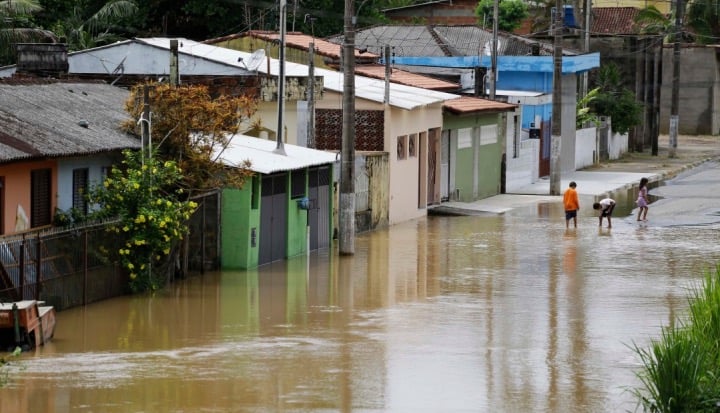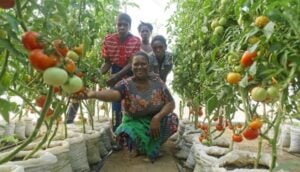These commitments continue to be a work in progress, but a more urgent focus is required to bridge the investment and financing gaps that exist between developing countries and wealthier nations to achieve climate goals without putting already-vulnerable populations at greater risk of becoming poorer. The adoption of the Paris Agreement was essential to framing the pursuit of Net Zero as a global public good whose targets can be scientifically measured, thereby galvanizing public policy and securing private-sector buy-in and investment.
If the world is to achieve Net Zero, then the same level of empathy and urgency must also be applied to poverty eradication, or Poverty Zero, the United Nations‘ first sustainable development goal. Public- and private-sector leaders need to elevate poverty reduction to a moral imperative whose responsibility is to be shouldered globally, rather than just locally or nationally. By integrating poverty and climate goals, the world can approach poverty reduction as a scientifically measurable global public good, creating policies and an investment pipeline using metrics that are universally adopted so that climate goals can be achieved faster—with less political tension, better economic outcomes and, most crucially, without increasing poverty.
In June, 40 heads of state and government, plus other high-ranking officials, gathered in Paris at the Summit for a New Global Financing Pact to propose a financing roadmap to accelerate poverty reduction and economic stability in developing countries as part of efforts to fight the global climate crisis. The Summit’s draft proposals were more incremental than transformational, angering leaders of developing countries who are requesting that wealthier nations provide debt cancellation, concessional financing and grants, and unified action on poverty reduction in conjunction with climate goals.
These grievances echo what John Kerry, U.S. Special Presidential Envoy for Climate, said earlier this year, noting that developing countries feel “victimised” by the climate crisis. Climate negotiations are plagued by “competence mistrust” and stuck on how to determine who will be made even poorer by climate change, who could be stranded because of climate adaptation policies and from where the funding will come.
This is amplifying political tension and disagreement about how to reconcile Net Zero goals with efforts nationally and globally to reduce poverty. Poverty reduction in 127 emerging economies has been accompanied by a steady rise in CO2 emissions per capita. Between 2000 and 2020, the proportion of people living in acute poverty dropped from 36% to 16%—a reduction of 56%. During the same period, however, CO2 emissions in these same countries increased 57%, from 2.1 to 3.3 tons per capita, according to data from The Poverty Zero Index by Wise Responder and Our World in Data.

The clear implication is that both Net Zero and Poverty Zero need to be measured. Science-based climate metrics targeting Net Zero have been broadly adopted by the public and private sectors. A similar approach to achieving Poverty Zero must also be embraced with the wide adoption and usage of science-based poverty metrics. Otherwise, the lack of scientific rigor in poverty measurement will have dire unintended consequences, leaving developing countries more economically vulnerable, making their people even poorer, and denying them the investment and financing necessary for a pathway to low- and non-carbon-producing energies.
To bridge negotiations, countries need to “Double Down” on their commitment to reducing poverty along with carbon emissions using science-based multidimensional poverty index (MPI) metrics that can provide more detailed insight into the lives of people in poverty and, in turn, enable more effective poverty reduction policies and programs. These metrics, based on the pioneering work of Oxford Poverty & Human Development Initiative (OPHI), University of Oxford, and the UNDP, measure dimensions of poverty across education, health, employment, access to services, assets and safety (Wise Responder is a spin-out of Oxford University).
Multilateral development banks are emerging as a powerful force in the parallel pursuits of Poverty Zero and Net Zero using MPI metrics. CAF -banco de desarrollo de América Latina y el Caribe- and Inter-American Development Bank, development banks serving Latin America and the Caribbean, for example, are working on projects that combine these metrics. At the end of 2022, 11 countries in Latin America and the Caribbean (LAC) had permanent official multidimensional poverty indices to guide policy. MPI data has been used in Colombia, for example, to help end the war, inform the response to the COVID-19 pandemic and is now the lead indicator of the current government’s plans. In Costa Rica, MPI data was used to target the national poverty reduction strategy, while MPI data was used in Mexico to inform Oaxaca’s targeting of public investment and public policies.
With climate change projected to lead to as much as a 300% increase in extreme poverty in LAC by 2030, a pivotal next step is to build out a framework that integrates poverty and climate change mitigation and adaptation goals. After 2000, there was more than a decade of significant poverty reduction in Latin America, but since 2014 acute multidimensional poverty has remained relatively constant, a setback that has sparked social unrest. Since 2006, the region experienced some periods of decreasing greenhouse gas emissions, but these were relatively modest and short-lived. This underscores the LAC region’s need for investment that will lower poverty and greenhouse gases in parallel; any other approach will not be politically sustainable.
A combined framework that bridges Net Zero and Poverty Zero goals can outline the funding tensions that exist and better identify viable policies and transition paths and can also attract support from the U.S., Europe, Asia and Africa.
To save the planet and ensure the well-being of its people, a global three-point plan of action is required of leaders across the public and private sectors:
- Governments and multilateral development banks (MDBs) need to measure Poverty Zero and Net Zero goals using Global Multidimensional Poverty Index measures from OPHI and the United Nations Development Programme as a baseline.
- MDBs can use Poverty Zero metrics to support the issuance of Double Down bonds by developing countries that can become a new asset class adoptable by investors.
- Private-sector action and investment can be mobilized by elevating Poverty Zero goal transparency to the same level as that of climate goals in trade agreements, employment, supply chains and customer impact reporting.
Putting Poverty Zero targets on par with Net Zero goals will allow us to scope tension at the heart of climate negotiations and agree on the appropriate investment and financing to ensure a just climate transition for all. Anything short of this risks compromising the achievement of both goals—to the detriment of people and the planet.
This article was previously featured on Wise Responder.










